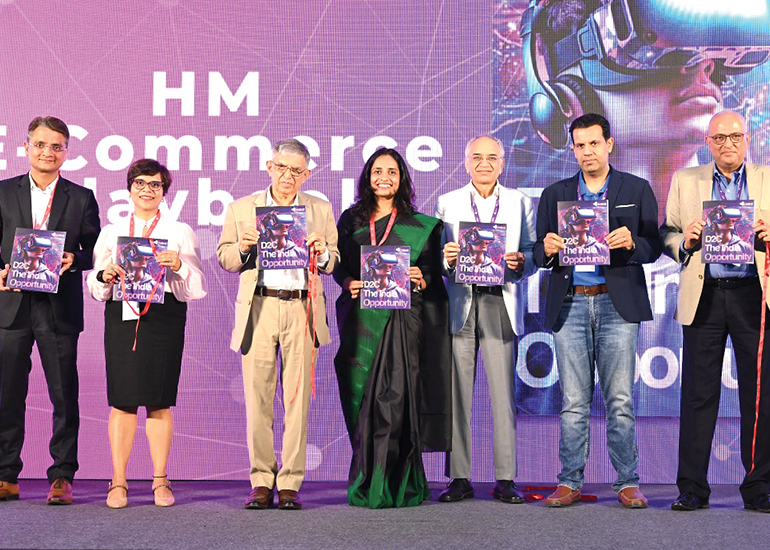 Indian consumers are upgrading in larger numbers than ever before. It is good for business, society and the overall economy. Our traditional demand structures being what they were, life stopped at the middle end of the spectrum. Consumption at the top was fragile and insubstantial. But in a few significant ways, the traditionally bottom weighted consumption proved a blessing because masstige options presented a horizon which prepared brands for a fulfilling relationship between consumer needs and consumer goods.
Indian consumers are upgrading in larger numbers than ever before. It is good for business, society and the overall economy. Our traditional demand structures being what they were, life stopped at the middle end of the spectrum. Consumption at the top was fragile and insubstantial. But in a few significant ways, the traditionally bottom weighted consumption proved a blessing because masstige options presented a horizon which prepared brands for a fulfilling relationship between consumer needs and consumer goods.Nirvana may lie in the middle, after all. Masstige trumps the conventional logic that the higher the price, the lower the volume because this mid category is ‘x’ times the price of the lower segments and ‘y’ times the volume of the luxury segment. Masstige brands defy the familiar. They lift above into uncharted territory with the traditional price-volume demand curve being their southern frontier. Masstige opens up new ground to the relationship between needs and wants; between volume growth and profitability; between affordability and aspiration.
Up-trading is a boulevard of progress, delight and achievement. Within it, masstige is the bright stretch. It defines ‘aspirational yet accessible’. It allows for an emotional surge through purchase. A neologism for ‘mass prestige’, the sector expanded along with the space between mass and class in post liberalization India. New prosperity in the upper middle allowed trickle down and climb up consumerism. Everyone had some aspiration where a masstige stretch was possible. Hence simultaneous up-trading in a few categories and down-trading in others was known to happen. The key for brands was building emotional engagement. Masstige meant intimate esteem and involvement, rather than sheer status and bragging rights.
However the emotional high is not to be taken as the insistent qualifier of masstige. That would be fallacious. There is a definite laddered appeal. Design, technology, quality, functional performance, reliability and longevity all have their place at the various rungs. The end effect is that it has larger appeal than mass and more access than luxury. It gets consumers to skew disproportionately.
What masstige leaders do:
• Create new mind space and consumer defintions
• Change the rules in a category
• Grow their bracket and the market Masstige can cannibalize the conventional brands that offer neither a price advantage nor emotional benefits. First they gain sales traction, followed by share and profitability.
Why has this up-trading, upgrading and expanded interest in masstige arisen? The one key reason summing it all is affluence. A certain class of Indian households had more discretionary wealth available to spend than ever before. In a uniquely diffused way, all Indians were better off in the two decades after 1990, but there was also concentration of spending power in the upper-middle and middle class. As a whole, they commanded the biggest reservoir of ‘ready to spend’ liquidity. The family size in this class was smaller and net incomes were higher in per capita terms, suggesting that there was more per person available to spend. Women were equal consumers too. This entire cohort was better travelled, possessed higher sophistication, exposure and discernment.
But deep down there are societal and economic forces of a more nuanced variety. Indian masstige growth is fueled by:
• Urban expansion and suburban clusters
• Consumerism as a sign of advancement
• Intensified emotional sensibilities that are expressed via brand choices
The consumers who upgrade are responding to emotional urges. They want to consume with a gusto and feel good about life. They feel they have earned the right to do so.
On the demand side, the demographic, cultural and compositional trends are inexorable. Therefore, professionals with new skills and capabilities are gearing up to satisfy this demand. Brands, both Indian and global, are catering to this emerging consumer. Marketers are spending more on retail and media promotions. Specialty retail has emerged in every vertical. Global supply chains have emerged in sourcing, manufacturing and distribution.
The ones who flourish in the masstige market have some unique characteristics:
1. They are consumer sensitive top-down and bottom-up
2. They operate outside conventional econometric models
3. They go for innovations that shift the equation – higher price, higher volume
4. They look at operations as ‘brand first’ but delivering a quality product or service experience
5. They stretch the brand, but create, define and maintain a distinctive character
6. They attempt to create lifestyle and culture
Whereas elitism and luxury was traditionally aloof; cold, expensive, bespoke and entitled it is not so with masstige, which is rather intimate, accessible, premium and mass elegant with touches of finish and craft.
Limited, not exclusive is the mantra. It is not about exclusion but admission based on achievement. Strength to this phenomenon.
(Shubhranshu Singh is a marketer who writes regularly on brands and brand-building)























